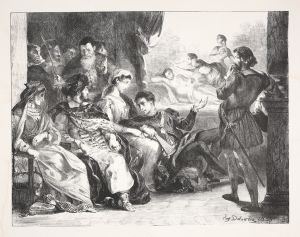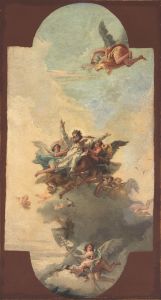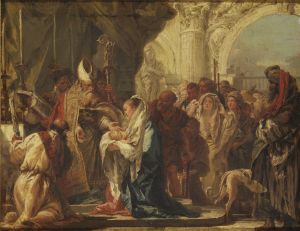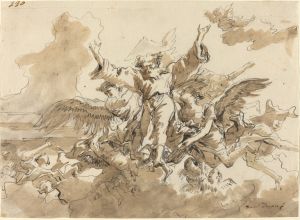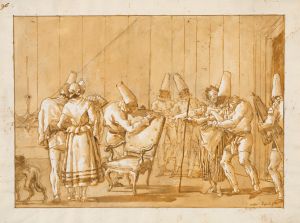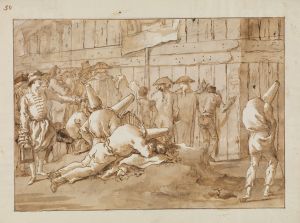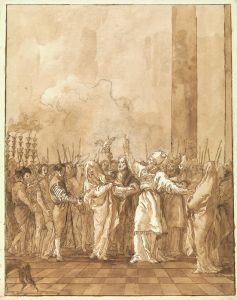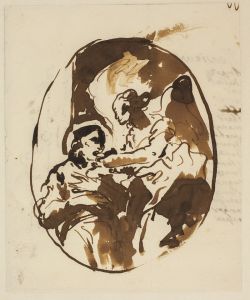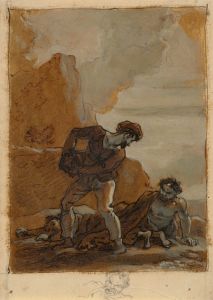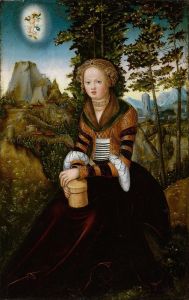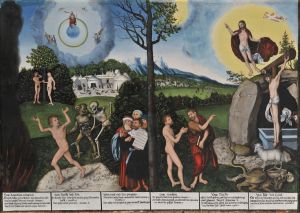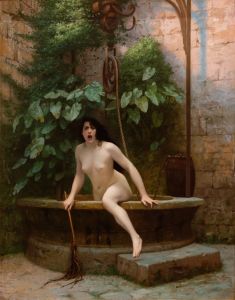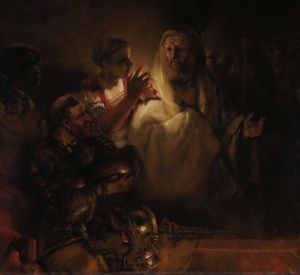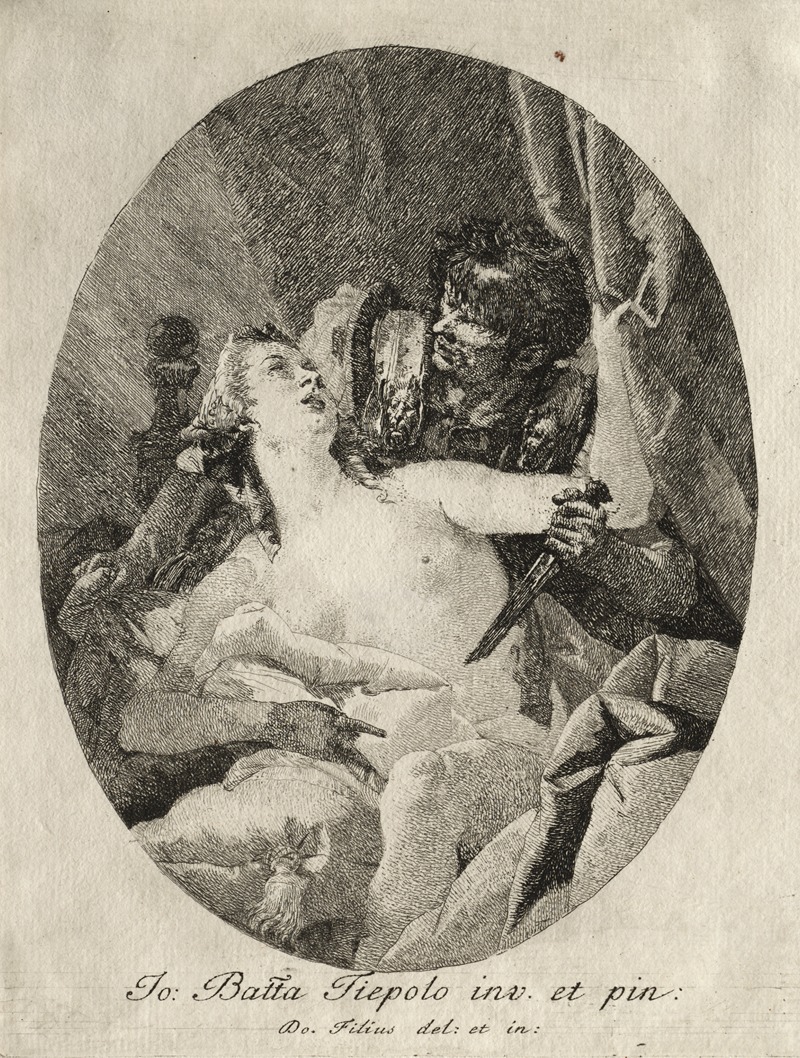
Tarquin and Lucretia
A hand-painted replica of Giovanni Domenico Tiepolo’s masterpiece Tarquin and Lucretia, meticulously crafted by professional artists to capture the true essence of the original. Each piece is created with museum-quality canvas and rare mineral pigments, carefully painted by experienced artists with delicate brushstrokes and rich, layered colors to perfectly recreate the texture of the original artwork. Unlike machine-printed reproductions, this hand-painted version brings the painting to life, infused with the artist’s emotions and skill in every stroke. Whether for personal collection or home decoration, it instantly elevates the artistic atmosphere of any space.
"Tarquin and Lucretia" is a painting by the Italian artist Giovanni Domenico Tiepolo, who was born in 1727 and died in 1804. Giovanni Domenico Tiepolo was the son of the renowned painter Giovanni Battista Tiepolo, and he followed in his father's footsteps, becoming an accomplished artist in his own right. Domenico Tiepolo is known for his frescoes, religious paintings, and genre scenes, often characterized by their lively compositions and vibrant use of color.
The painting "Tarquin and Lucretia" depicts a dramatic and tragic scene from Roman history. The story of Lucretia is a well-known legend from ancient Rome, which has been a popular subject in art and literature for centuries. According to the legend, Lucretia was a noblewoman who was raped by Sextus Tarquinius, the son of the last king of Rome, Lucius Tarquinius Superbus. The assault led to Lucretia's suicide, an event that incited a rebellion against the monarchy and ultimately resulted in the establishment of the Roman Republic.
In Tiepolo's painting, the artist captures the intense and emotional moment of the assault. The composition typically features Lucretia in a state of distress, with Tarquin looming over her, emphasizing the power dynamics and the violence of the act. Tiepolo's use of light and shadow, as well as his attention to detail in the figures' expressions and gestures, heightens the drama of the scene.
Giovanni Domenico Tiepolo's "Tarquin and Lucretia" reflects the Rococo style, which was prevalent during the 18th century. This style is characterized by its ornate and decorative qualities, as well as its emphasis on movement and emotion. Tiepolo's work often includes dynamic compositions and a sense of theatricality, which can be seen in the way he portrays the figures and their interactions in this painting.
The painting is also notable for its historical and cultural significance. The story of Lucretia has been interpreted in various ways over the centuries, often seen as a symbol of virtue, honor, and the consequences of tyranny. By choosing this subject, Tiepolo engages with these themes and contributes to the ongoing dialogue about power, morality, and justice.
"Tarquin and Lucretia" by Giovanni Domenico Tiepolo is an important example of 18th-century Italian painting, showcasing the artist's skill in composition, use of color, and ability to convey complex emotions through his work. The painting remains a powerful representation of a pivotal moment in Roman history and continues to be appreciated for its artistic and historical value.






